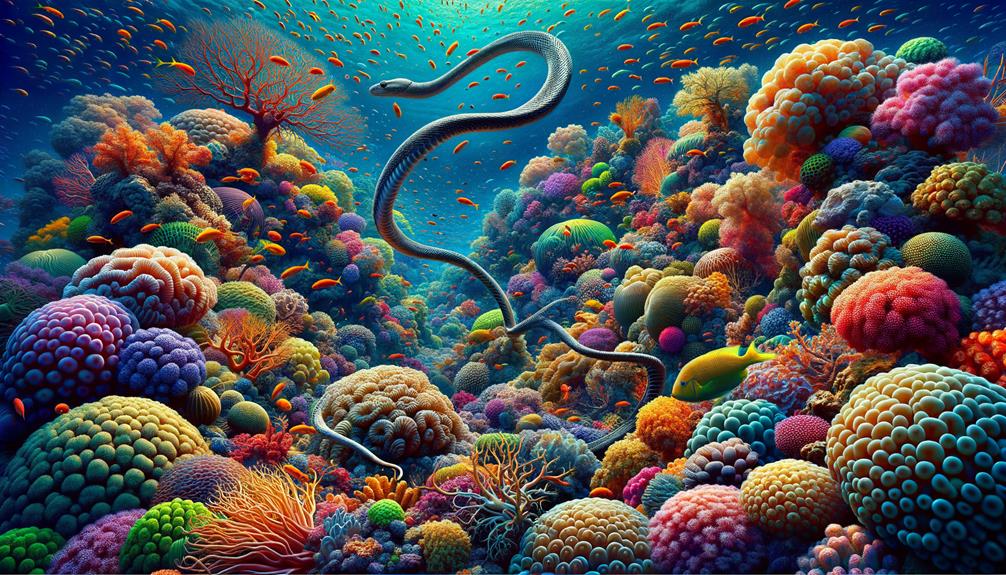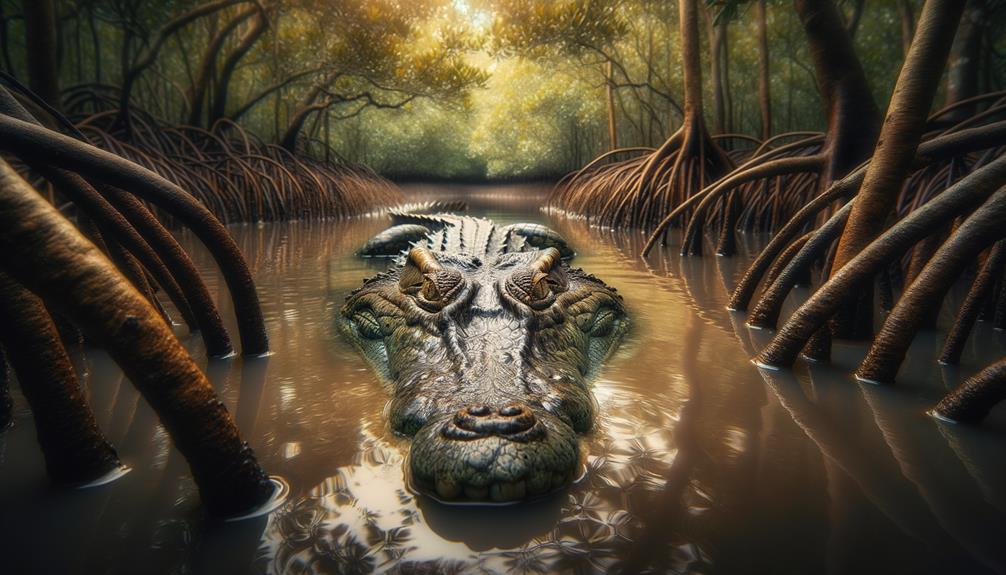The moonlit beach set the stage for an age-old ritual. I watched in awe as female sea turtles, guided by instinct, searched for quiet, dark spots to nest. These ancient creatures dug precise holes, creating body pits and egg chambers. Each turtle typically lays about 110 eggs per clutch. The depth of these chambers plays a crucial role, influencing whether the hatchlings will be male or female – a remarkable example of nature's intricate balance. But the story doesn't end there. These vulnerable eggs face numerous challenges before hatching. Understanding their journey from nest to sea is not only fascinating but also critical for conservation efforts. How do these fragile beginnings transform into the next generation of sea turtles? It's a tale that continues to captivate researchers and beachgoers alike.
Nesting Behavior
Female sea turtles show remarkable dedication during nesting season. They come ashore on quiet, dark beaches to dig a body pit and egg chamber, where they'll lay around 110 eggs per nest. It's a fascinating process that showcases their strength and instinct.
Using their flippers, these determined mothers carve out a deep body pit in the sand. This pit serves as a protective cover for their future offspring. Within this larger pit, they create a smaller, flask-shaped chamber specifically for the eggs.
The egg chamber's depth is crucial. It needs to shield the eggs and maintain the right temperature, which plays a key role in determining the sex of the hatchlings. Getting this step right is vital for the survival and balance of future sea turtle populations.
After preparing the chamber, the turtle begins laying her eggs, carefully dropping each one inside. Once finished, she covers the nest with sand, disguising it from potential threats. This meticulous process gives the next generation of sea turtles a fighting chance to one day return to these same beaches.
This nesting behavior is a testament to the sea turtle's resilience and the intricate balance of nature. It's a reminder of the importance of protecting these nesting sites and the delicate ecosystems they support.
Hatchling Survival
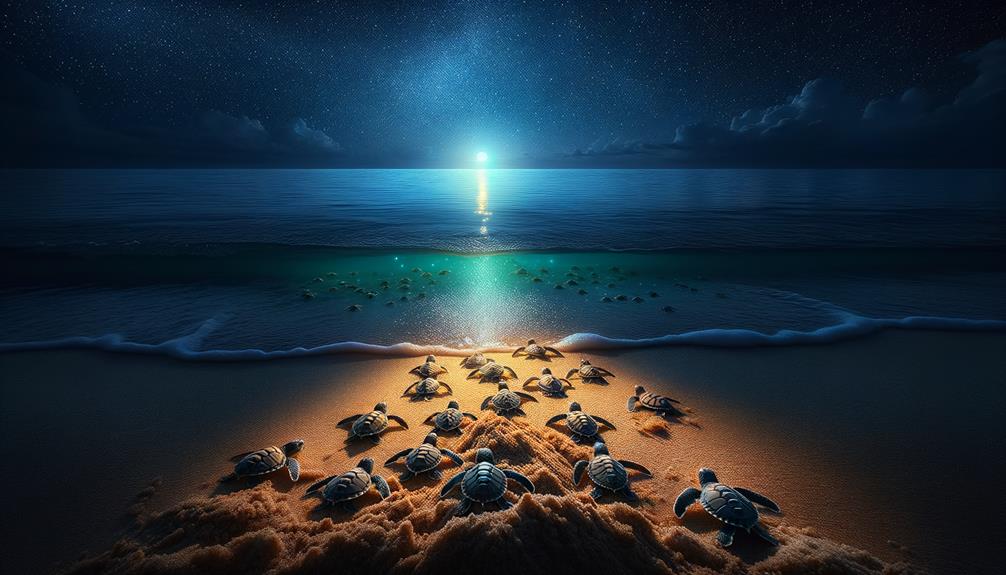
Sea turtle hatchlings face a tough road ahead, with only one in a thousand making it to adulthood. These tiny creatures emerge from their nests on beaches, facing a world of challenges without their mothers to guide them. They rely solely on instinct and the brightest light to find their way to the ocean.
The odds are stacked against these little turtles, but nature has a clever trick up its sleeve. By hatching together, they create a safety-in-numbers effect that can overwhelm predators. This gives more of them a fighting chance to reach the water. As they race towards the sea, they follow the glow of the moon or stars on the water's surface. But watch out – artificial lights can throw them off course.
Even once they hit the waves, they're not out of the woods yet. Hungry fish and birds are on the lookout for an easy meal. Those that make it through this dangerous stretch will grow stronger as they head out to the open ocean. These tough little creatures start their lives with a risky journey right from the get-go. Every hatchling that survives helps keep the cycle going, making sure we'll see more nesting sea turtles on these vital beaches in the future.
Beach Conservation
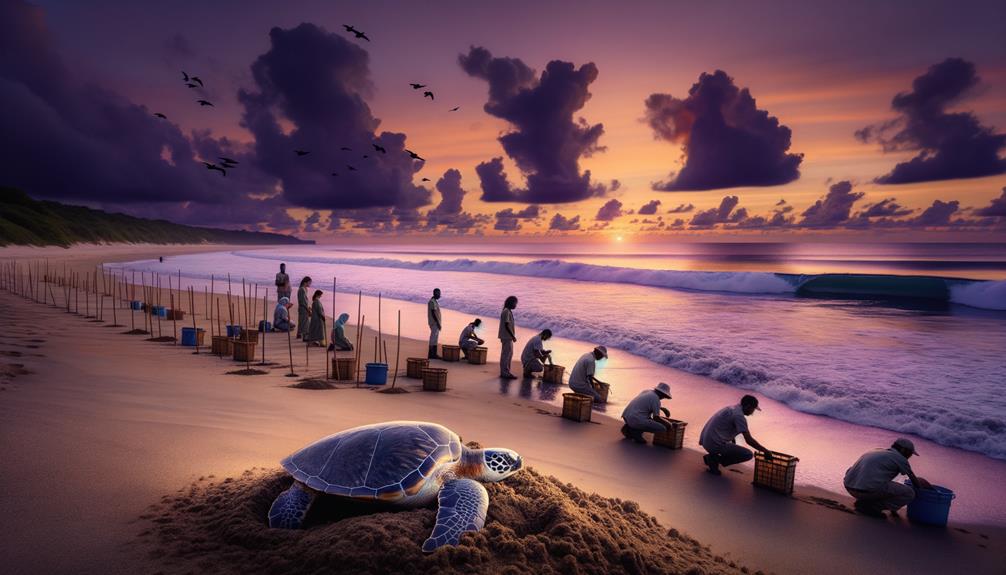
Tiny sea turtle hatchlings face a dangerous trek to the ocean, and our actions on land can make or break their chances. Protecting nesting beaches is critical for their survival. The flood of plastic waste entering our oceans daily poses a serious threat to both the beaches and the female turtles coming ashore to lay eggs.
Keeping beaches safe for turtles goes beyond just picking up litter. It's about creating an environment where turtle populations can thrive. Seemingly harmless items like balloons, plastic bags, and bottle caps can be deadly. Through dedicated conservation work, we can maintain the natural conditions needed by species like the Green Sea Turtle.
| Main Concerns | Conservation Steps |
|---|---|
| Ocean Waste | Beach clean-ups, reducing plastic use |
| Shoreline Building | Restricting construction, safeguarding habitats |
| Night Lighting | Using turtle-safe lights |
Beach gear left behind can scare off nesting females and disrupt their egg-laying. Year-round efforts, such as ditching plastic straws and opting for reusable items, support turtle preservation. By cutting down on ocean waste and easing the impact of coastal development, we give these ancient sea creatures a fighting chance. Working together with care, we can ensure a future where sea turtles nest safely and flourish.
Human Impact
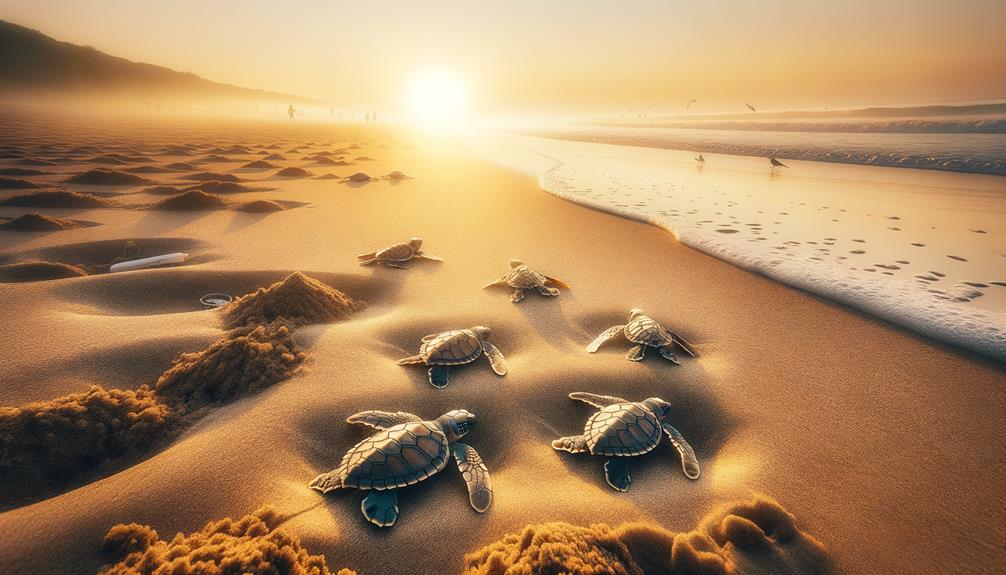
Sea turtles face serious challenges when they return to their birth beaches to nest, thanks to human activities. Unchecked building along coastlines often wipes out nesting spots, leaving these at-risk animals with fewer safe places to lay eggs. Bright lights from cities and towns throw off both nesting turtles and their newborns, often leading them away from the sea and putting their lives at risk.
Cars and trucks driving on beaches can crush nests and turtles, while garbage in the ocean tangles up both adult turtles and hatchlings, making it hard for them to survive. On top of that, rising sea levels threaten to flood nesting areas, putting these key habitats in even more danger.
Egg theft remains a big problem. Even though a turtle might lay about 100 eggs per nest and make several nests each season, very few babies make it to adulthood. The Turtle Island Restoration Network puts in a lot of effort to shield nesting mothers, eggs, and newborns from these threats.
To tackle these issues, we need to rethink how we develop coastal areas, cut down on light pollution, and step up beach patrols to stop poaching. It's also crucial to clean up our oceans and beaches to give these ancient creatures a fighting chance. By taking action now, we can help ensure sea turtles continue to swim in our oceans for generations to come.
Conservation Efforts
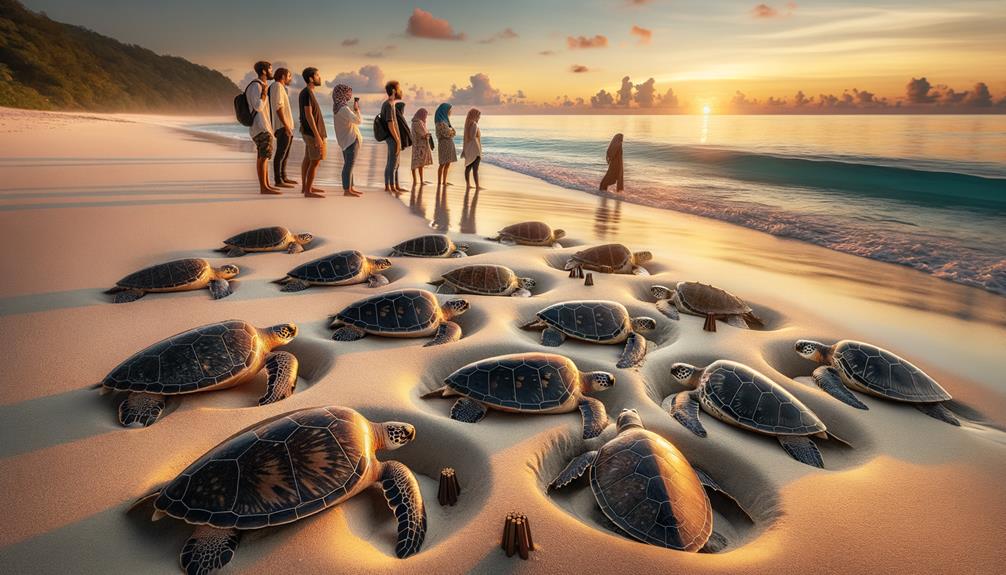
Sea turtles face significant challenges due to human activities, prompting focused efforts to protect these ancient ocean dwellers and their crucial nesting sites. Safeguarding nesting beaches is key to addressing threats like overdevelopment, light pollution, and illegal egg collection. These actions help ensure the safety of nesting females, their eggs, and hatchlings, boosting the chances of survival for these at-risk species.
Programs aimed at protecting sea turtle populations are vital. They work on several fronts:
- Stopping egg theft: People can help by sponsoring nests, which deters thieves and boosts the number of hatchlings that survive.
- Encouraging responsible beach visits: Teaching tourists about the importance of leaving nesting areas untouched creates a supportive environment for sea turtles.
- Pushing for better laws: Campaigning for stronger protections of nesting habitats ensures long-term conservation success.
Backing these beach protection efforts does more than just help sea turtles; it maintains the rich variety of life in our oceans. Each contribution to these local projects plays a part in keeping our seas in balance. By getting involved in these conservation activities, we're working to ensure these magnificent creatures and their nesting grounds will be around for years to come.
Frequently Asked Questions
What Time of Year Do Turtles Lay Eggs on the Beach?
The beach transforms into a sacred space as night falls, with the moon casting its glow over the sand. From early spring through late autumn, female turtles make their way ashore. These ancient creatures, survivors of countless eras, dig their nests and deposit around 100 eggs each. Under the watchful eyes of the stars, they ensure the continuation of their species, a ritual as old as time itself.
What Beaches Do Sea Turtles Nest On?
Sea turtles lay their eggs on beaches across the globe. Popular nesting spots include the Florida coast, Tortuguero in Costa Rica, and parts of Australia's Great Barrier Reef. These locations offer the right mix of conditions that sea turtles need for successful nesting. The variety of nesting sites helps maintain the genetic diversity of these remarkable marine reptiles, playing a crucial role in their ongoing survival.
Why Do Turtles Nest on the Beach?
Funny how turtles seem to have better beach vacations than we do. They choose sandy shores for nesting because the temperature of the sand plays a big role in determining whether the babies will be male or female. Certain beaches also offer better protection from predators and have the right magnetic signals that help guide the little ones back to sea when they hatch. It's like nature's own GPS system for these shelled travelers.
What Should I Do if I See a Sea Turtle Laying Eggs on the Beach?
When spotting a sea turtle laying eggs on the beach, it's best to follow some key guidelines. Stick with experienced guides who know the ropes. Give the turtle plenty of space – you don't want to stress her out. Walk closer to the water where the sand is damp to avoid leaving deep footprints. Always check and follow local rules about turtle nesting areas. These steps help ensure the turtle can lay her eggs without any disruptions. Remember, we're guests in their habitat, so it's up to us to be respectful and responsible.


